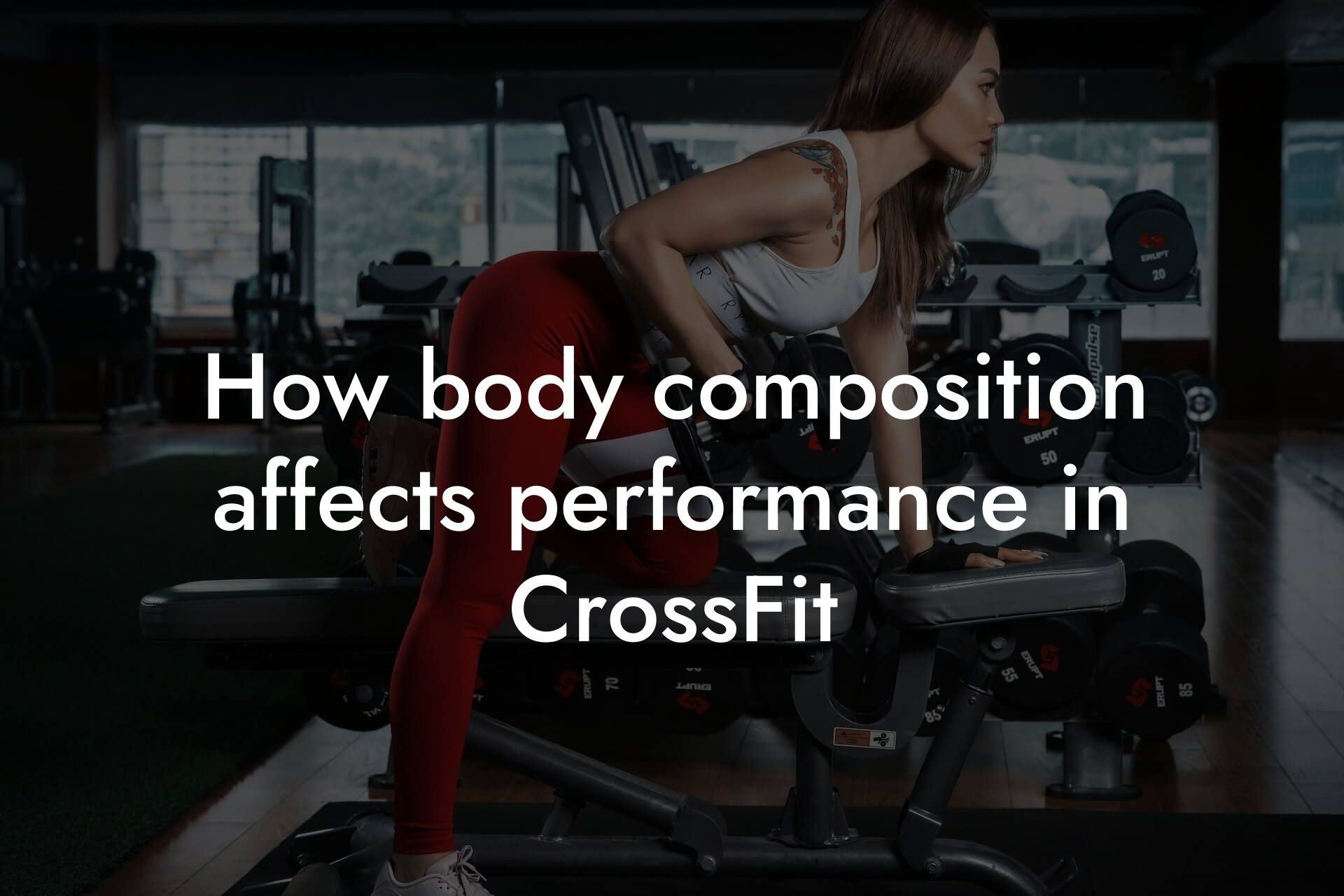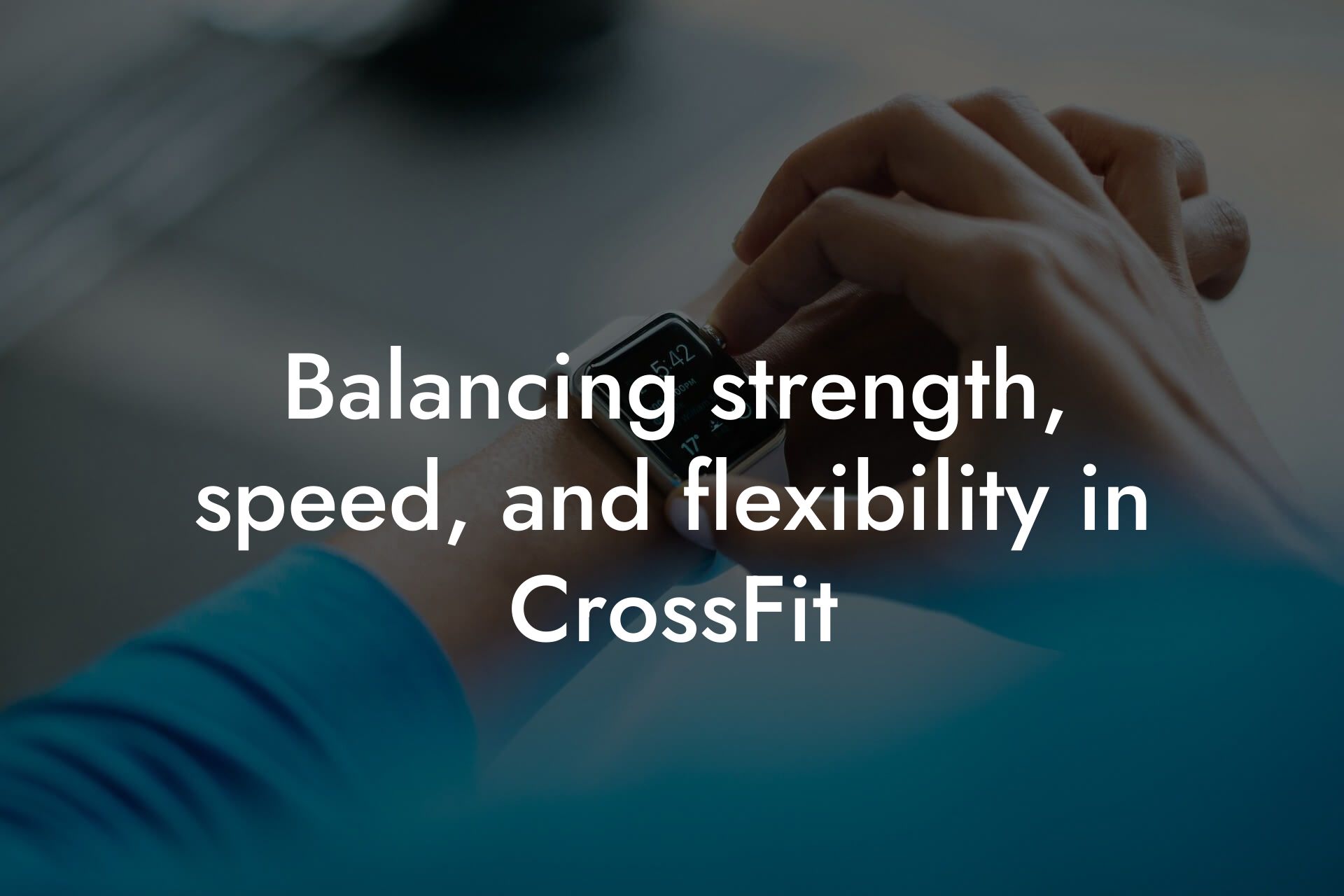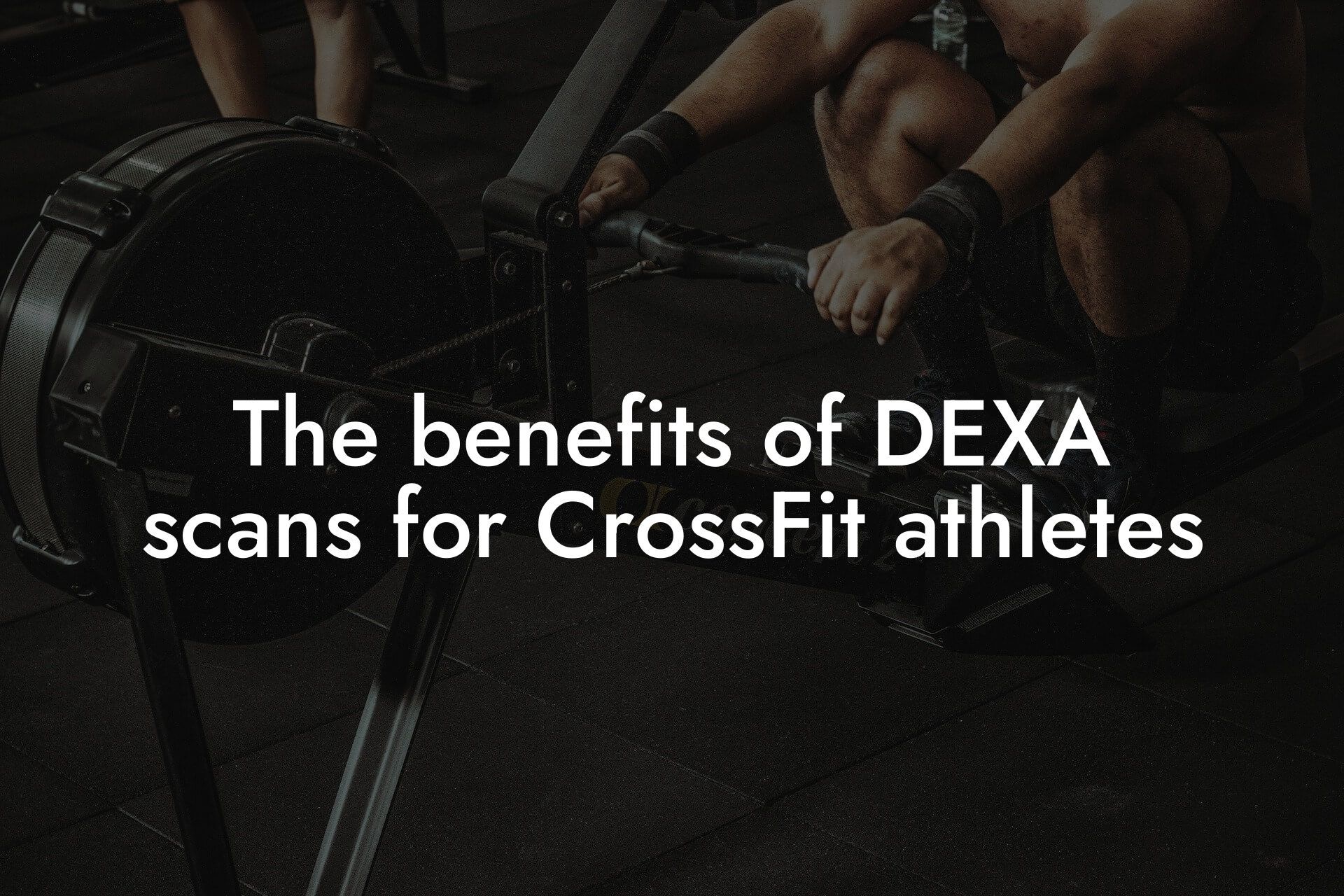As a high-earning professional, you understand the importance of physical appearance and overall health in achieving success in your career and personal life. One of the key components of achieving optimal physical fitness is building and maintaining muscle mass. In the context of CrossFit, muscle mass plays a critical role in enhancing endurance and power. In this article, we will delve into the importance of muscle mass in CrossFit, how it impacts endurance and power, and provide practical tips on how to build and maintain muscle mass for optimal performance.
Table of Contents
What is Muscle Mass and Why is it Important?
Muscle mass refers to the amount of muscle tissue in the body. It is an important indicator of overall health and fitness, as it plays a crucial role in maintaining bone density, regulating metabolism, and enhancing athletic performance. In CrossFit, muscle mass is essential for generating power, speed, and endurance during workouts. A higher muscle mass means more muscle fibers, which translates to increased strength, speed, and agility.
The Relationship Between Muscle Mass and CrossFit Performance
Research has consistently shown that athletes with higher muscle mass tend to perform better in CrossFit workouts. This is because muscle mass is directly correlated with power output, speed, and endurance. In CrossFit, athletes with higher muscle mass can generate more force, move faster, and sustain longer periods of high-intensity exercise. Additionally, muscle mass helps to reduce the risk of injury, as it provides additional support and stability to joints and muscles.
Muscle Mass and Endurance in CrossFit
Endurance is a critical component of CrossFit, as it involves sustaining high-intensity exercise over prolonged periods. Muscle mass plays a crucial role in enhancing endurance by increasing the body's ability to utilize oxygen and generate energy. With more muscle mass, the body can sustain longer periods of high-intensity exercise, as it has a greater capacity to store energy and recover from fatigue. This is particularly important in CrossFit, where workouts often involve prolonged periods of high-intensity exercise.
Muscle Mass and Power in CrossFit
Power is another critical component of CrossFit, as it involves generating maximum force and speed during exercises. Muscle mass is essential for generating power, as it provides the necessary force and speed to perform exercises such as Olympic lifts, jumps, and sprints. With more muscle mass, athletes can generate more force and speed, resulting in improved power output and overall performance.
How to Build and Maintain Muscle Mass for CrossFit
Building and maintaining muscle mass requires a combination of proper nutrition, consistent training, and sufficient rest and recovery. Here are some practical tips to help you build and maintain muscle mass for optimal CrossFit performance:
• Ensure you are consuming sufficient protein to support muscle growth and repair. Aim for 1-1.5 grams of protein per kilogram of body weight daily.
• Focus on strength training exercises such as squats, deadlifts, and bench press to build muscle mass.
• Incorporate high-intensity interval training (HIIT) into your workout routine to improve power and endurance.
• Get sufficient rest and recovery, aiming for 7-9 hours of sleep daily and taking rest days as needed.
• Consider working with a coach or trainer to develop a personalized training and nutrition plan tailored to your needs and goals.
The Role of DEXA Scans in Tracking Muscle Mass
DEXA (Dual-Energy X-ray Absorptiometry) scans are a valuable tool for tracking muscle mass and overall body composition. By providing a detailed analysis of body fat, lean mass, and bone density, DEXA scans can help you identify areas for improvement and track the effectiveness of your training and nutrition plan. At Tano Performance Group, we use DEXA scans as part of our comprehensive body assessment to provide our clients with a detailed understanding of their body composition and guide them towards achieving their fitness goals.
In conclusion, muscle mass plays a critical role in enhancing endurance and power in CrossFit. By building and maintaining muscle mass through proper nutrition, consistent training, and sufficient rest and recovery, athletes can improve their overall performance and reduce the risk of injury. Additionally, DEXA scans can provide valuable insights into body composition and guide training and nutrition plans. As a high-earning professional, investing in your physical health and fitness is essential for achieving success in your career and personal life. By prioritizing muscle mass and overall fitness, you can unlock your full potential and achieve your goals.
At Tano Performance Group, we are committed to helping high-earning professionals like you achieve optimal physical fitness and overall health. Our comprehensive body assessment, including DEXA scans, provides a detailed understanding of body composition and guides training and nutrition plans. Contact us today to learn more about how we can help you achieve your fitness goals.
Frequently Asked Questions
What is the importance of muscle mass in CrossFit?
Muscle mass plays a crucial role in CrossFit as it directly impacts an individual's endurance and power. Having a sufficient amount of muscle mass enables athletes to perform daily tasks and exercises with more efficiency, leading to improved overall fitness.
How does muscle mass affect endurance in CrossFit?
Muscle mass is essential for endurance in CrossFit as it allows athletes to sustain long periods of exercise without fatigue. The more muscle mass an individual has, the more efficient their body becomes at utilizing oxygen and energy, leading to improved endurance.
What is the relationship between muscle mass and power in CrossFit?
Muscle mass and power are closely linked in CrossFit. Having a higher amount of muscle mass enables athletes to generate more force and power, leading to improved performance in exercises such as weightlifting and sprinting.
Can I still perform well in CrossFit with low muscle mass?
While it is possible to perform well in CrossFit with low muscle mass, it may be more challenging. Athletes with low muscle mass may need to focus more on technique and strategy to compensate for their lack of strength and power.
How can I increase my muscle mass for CrossFit?
Increase your muscle mass for CrossFit by focusing on a well-balanced diet that provides adequate protein, carbohydrates, and healthy fats. Additionally, incorporate strength training exercises into your workout routine, such as weightlifting and resistance band exercises.
What is the ideal body fat percentage for CrossFit athletes?
The ideal body fat percentage for CrossFit athletes varies depending on the individual and their goals. However, a general range of 10-15% body fat for men and 15-20% body fat for women is considered optimal for performance and overall health.
How does body fat percentage affect CrossFit performance?
Having a high body fat percentage can negatively impact CrossFit performance by reducing endurance, power, and overall athleticism. On the other hand, having a low body fat percentage can improve performance but may also increase the risk of injury and burnout.
Can I still participate in CrossFit with a high body fat percentage?
Yes, you can still participate in CrossFit with a high body fat percentage. However, it's essential to start slowly and gradually increase the intensity and difficulty of your workouts to avoid injury and burnout.
How can I measure my body fat percentage?
There are several ways to measure body fat percentage, including skinfold measurements, bioelectrical impedance analysis (BIA), and dual-energy X-ray absorptiometry (DXA). Consult with a healthcare professional or certified trainer to determine the best method for you.
What is the role of nutrition in building muscle mass for CrossFit?
Nutrition plays a critical role in building muscle mass for CrossFit. Ensure you're consuming a balanced diet that provides adequate protein, carbohydrates, and healthy fats to support muscle growth and recovery.
How much protein do I need to consume to build muscle mass for CrossFit?
Aim to consume 1.2-1.6 grams of protein per kilogram of body weight daily to support muscle growth and recovery. For example, a 70kg athlete would need to consume 84-112 grams of protein per day.
What are some examples of protein-rich foods for CrossFit athletes?
Examples of protein-rich foods for CrossFit athletes include lean meats like chicken and turkey, fish, eggs, dairy products, legumes, and plant-based protein powders.
How can I incorporate strength training into my CrossFit workout routine?
Incorporate strength training into your CrossFit workout routine by adding exercises like weightlifting, resistance band exercises, and bodyweight exercises. Focus on compound exercises like squats, deadlifts, and bench press to build overall strength.
What is the importance of recovery in building muscle mass for CrossFit?
Recovery is crucial in building muscle mass for CrossFit as it allows your muscles to repair and grow. Ensure you're getting adequate sleep, stretching regularly, and incorporating rest days into your workout routine.
How can I improve my bone density for CrossFit?
Improve your bone density for CrossFit by incorporating exercises that involve weight-bearing activities, such as weightlifting and jumping exercises. Additionally, ensure you're consuming a diet rich in calcium and vitamin D.
What is the relationship between bone density and CrossFit performance?
Bone density is essential for CrossFit performance as it reduces the risk of injury and improves overall athleticism. Having strong bones enables athletes to perform exercises with more power and efficiency.
Can I still participate in CrossFit with low bone density?
Yes, you can still participate in CrossFit with low bone density. However, it's essential to take precautions to avoid injury, such as incorporating low-impact exercises and avoiding high-impact activities.
How can I track my progress in building muscle mass for CrossFit?
Track your progress in building muscle mass for CrossFit by taking regular measurements of your body fat percentage, weight, and circumference of your muscles. Additionally, monitor your workout performance and adjust your diet and training routine accordingly.
What are some common mistakes to avoid when building muscle mass for CrossFit?
Common mistakes to avoid when building muscle mass for CrossFit include overtraining, inadequate nutrition, and poor recovery techniques. Additionally, avoid focusing too much on aesthetics and instead focus on building functional strength and endurance.
How long does it take to see results in building muscle mass for CrossFit?
The time it takes to see results in building muscle mass for CrossFit varies depending on the individual and their training program. However, with consistent training and nutrition, athletes can start to see noticeable improvements in 6-12 weeks.
Can I build muscle mass for CrossFit at any age?
Yes, you can build muscle mass for CrossFit at any age. However, it's essential to take into account any age-related health concerns and adjust your training program accordingly. Consult with a healthcare professional or certified trainer to determine the best approach for you.
How can I stay motivated to build muscle mass for CrossFit?
Stay motivated to build muscle mass for CrossFit by setting realistic goals, finding a workout buddy, and tracking your progress. Additionally, focus on the overall benefits of CrossFit, such as improved health and wellness, rather than just aesthetics.
What are some common myths about building muscle mass for CrossFit?
Common myths about building muscle mass for CrossFit include the idea that you need to be young to build muscle, that muscle building is only for aesthetics, and that you need to spend hours in the gym to see results. These myths are false, and with consistent training and nutrition, anyone can build muscle mass for CrossFit.
How can I incorporate CrossFit into my busy schedule?
Incorporate CrossFit into your busy schedule by finding a gym that offers flexible hours, working out at home, or incorporating bodyweight exercises into your daily routine. Additionally, prioritize your workouts and make them a non-negotiable part of your daily routine.
What are the benefits of working with a certified CrossFit trainer?
The benefits of working with a certified CrossFit trainer include personalized coaching, improved technique, and increased motivation. A certified trainer can also help you develop a customized training program tailored to your goals and needs.
Here are some related articles you might love...
- How body composition affects performance in CrossFit
- Balancing strength, speed, and flexibility in CrossFit
- The benefits of DEXA scans for CrossFit athletes
- Nutrition tips for sustaining energy during CrossFit workouts
- Recovery techniques for CrossFit athletes after intense WODs
- Reducing body fat for better performance in CrossFit competitions
- Off-season training strategies for CrossFit athletes
- Bone density and injury prevention in CrossFit
- Strength and conditioning programs for CrossFit athletes
Zak Faulkner
Zak Faulkner is a leading authority in the realm of physical health and body composition analysis, with over 15 years of experience helping professionals optimise their fitness and well-being. As one the experts behind Tano Performance Group, Zak has dedicated his career to providing in-depth, science-backed insights that empower clients to elevate their physical performance and overall health.
With extensive knowledge of DEXA technology, Zak specializes in delivering comprehensive body assessments that offer precise data on body fat, muscle mass, bone density, and overall physique. His expertise enables individuals to make informed decisions and achieve their fitness goals with accuracy and confidence. Zak’s approach is rooted in a deep understanding of human physiology, combined with a passion for helping clients unlock their full potential through personalised strategies.
Over the years, Zak has earned a reputation for his commitment to excellence, precision, and client-focused service. His guidance is trusted by top professionals who demand the best when it comes to their health. Whether advising on fitness programs, nutritional strategies, or long-term wellness plans, Zak Faulkner’s insights are a valuable resource for anyone serious about taking their health and fitness to the next level.
At Tano Performance Group, Zak continues to lead our Content Team revolutionising how professionals approach their physical health, offering unparalleled expertise that drives real results.




